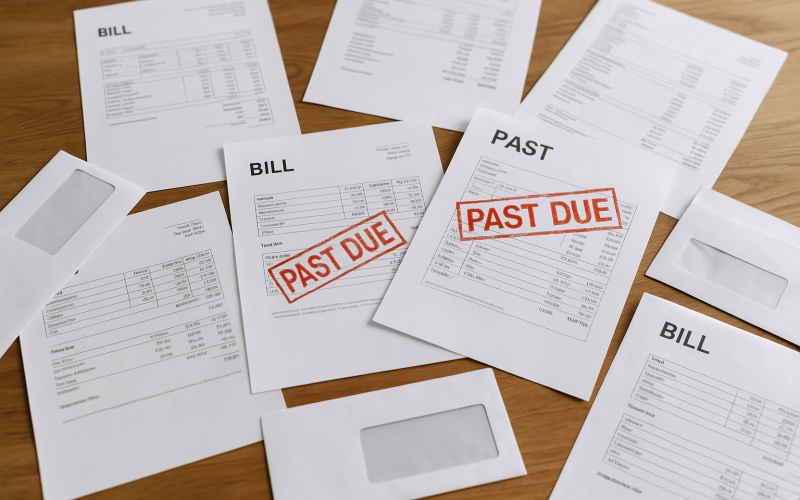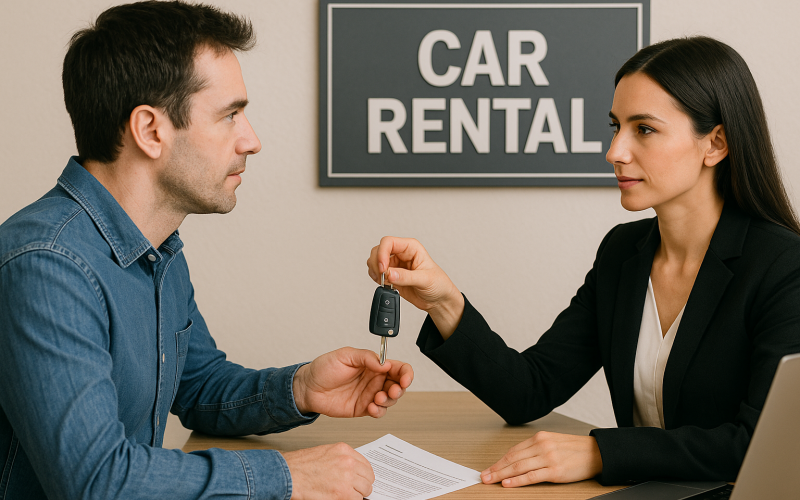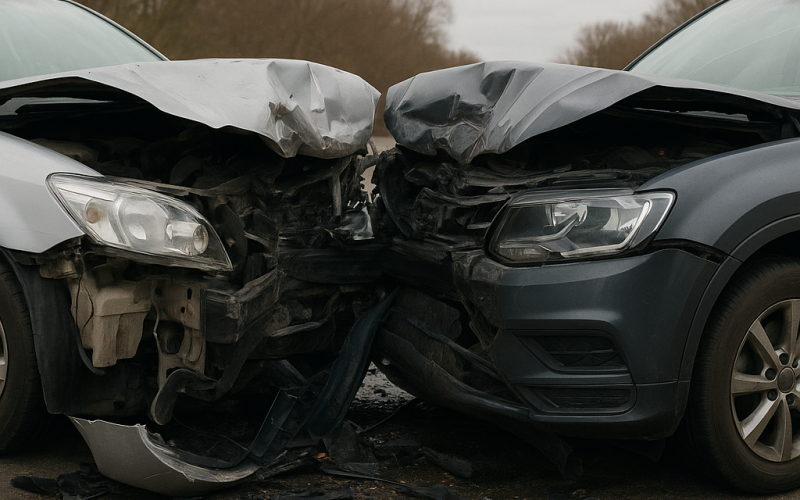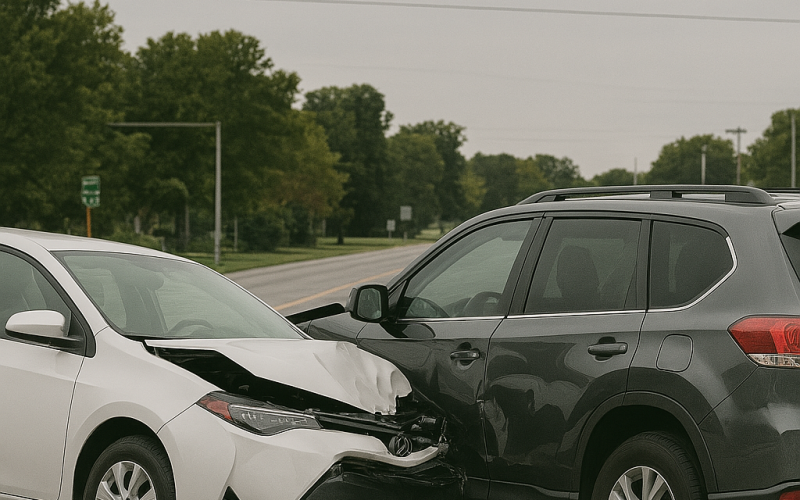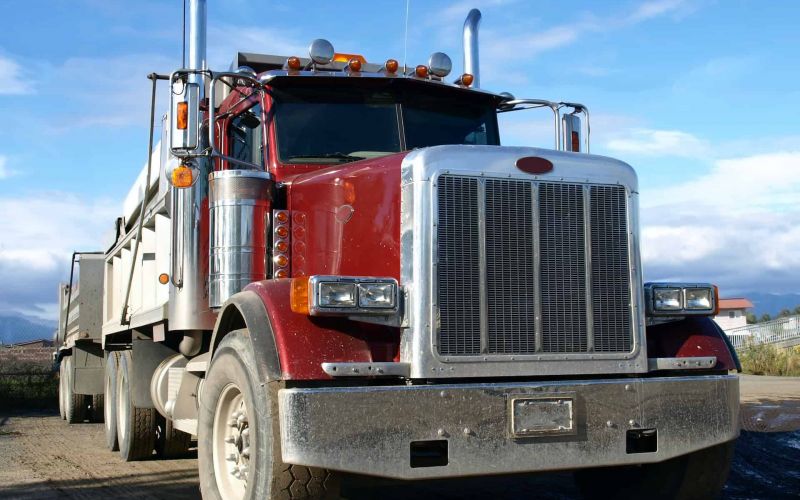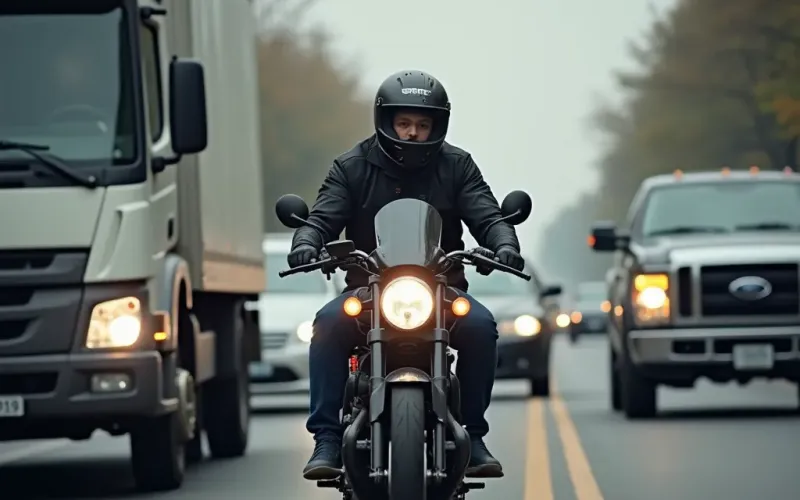Are Wet Roadways Causing More Accidents?
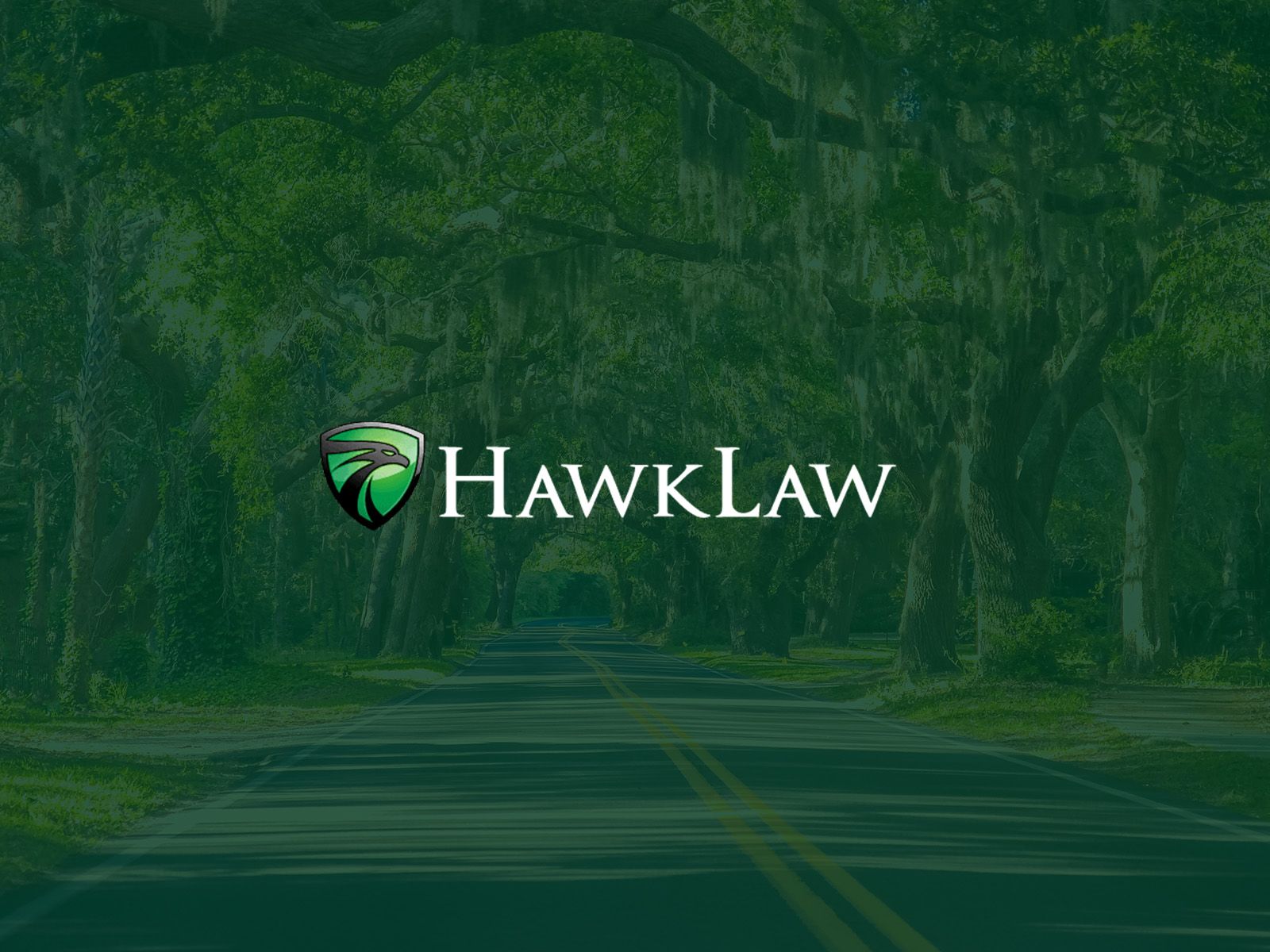


If you have ever been caught in a rainstorm, you know that road conditions can change in an instant. One moment, it is just a drizzle and a bit of rainy weather, and before you know it, poor visibility means you cannot see 5 feet in front of you, let alone another motor vehicle around you. In 2019 alone, heavy rain was responsible for more than 21,000 auto accident cases in South Carolina. Rain and bad weather cause serious personal injury, property damage, and even death. Always be vigilant when driving in inclement weather, and if you get into a car crash, get in touch with a car accident lawyer at HawkLaw, P.A. to help.
Why Is Rain a Problem for Drivers?
Wet roads cause tens of thousands of weather-related car accidents every year. From hydroplaning on slippery roads to a lack of visibility, the risks of standing water, and beyond, rain is one of the most severe road hazards out there. Driving in rain decreases your ability to see and react to imminent threats from other motorists.
Even if your car is in good condition, a rainy day can pose risks, but if your vehicle is not in good condition (i.e., having worn windshield wipers, old brake pads, etc.), the problem gets even worse. Just a little precipitation can cause roadways to become slick, leading to a skid when you step on your brakes. What looks like simple puddles can be deeper than you realize and damage your undercarriage or even blow a tire. In many ways, a rainy day is more dangerous than winter weather conditions because it looks less threatening and the dangers are hidden.
What Are Some Precautions to Take to Avoid a Car Accident During Rain in South Carolina?
In rainy weather, you as a driver have a legal responsibility to account for other drivers on the road and operate your vehicle in a responsible manner. Always take reasonable precautions when driving in the rain.
Drive Slower
Speed limits are in place for a reason, and many states have rules in place that require you to reduce speed on a rainy day. Poor weather conditions, even with just a little rain, can result in hydroplaning that makes you completely lose control of your vehicle. Take it slow. You will get where you want to go, and being late is better than not getting there at all.
Make Sure Your Lights Are On
Almost every state requires you to put your headlights on during poor weather. Some of the most common causes of rain-related crashes involve a lack of visibility, and having your lights on lets other drivers see you. As a caveat, however, do not use high beams or “brights.” These can actually blind you as they reflect off of falling rain. Stick to your regular headlights; the goal is to help others see you.
Do Not Brake Suddenly
Give yourself plenty of time to react to unexpected situations. Sudden braking or “brake slamming” always puts you at risk of a rear-end accident or losing control of your car. It gets worse in the rain. Sometimes it cannot be avoided, but always take precautions to minimize the chances that you will need to stomp on your brakes.
Keep Your Distance if Possible
One of the best ways to make sure you do not have to brake suddenly is to keep your distance from other vehicles. If at all possible, you should at least double the distance between your car and others on the road that you would keep in ideal conditions. If your car has adaptive cruise control, set your distance to the maximum possible.
What Is the Most Dangerous Time to Drive in the Rain?
The most dangerous time to drive in the rain is within the first 10 to 30 minutes of the storm’s beginning. There are several reasons for this, but most come down to the roads being exceptionally slick during this time. It only takes a very thin layer of water buildup and cause cars to hydroplane. Even more of a risk, however, is that rain brings oil on the road to the surface, and this creates very slippery roads. Vehicles also tend to leave residue on the road, including grease, oil, and tire residue, which breaks apart in the rain.
After the rain has continued for some time, the coating is more likely to wash away, except for puddles that create additional risks. In the end, if you can get where you are going before the rain starts, or if you can wait an extra half hour or so after, you will be in better shape for safety.
What Time of Day Is the Worst for Driving in the Rain?
Not surprisingly, nighttime is the worst time for driving in the rain. Rain already obscures your vision as it pours down, and at night the problem is compounded because it is dark. According to the National Highway Traffic Safety Administration (NHTSA), motorists are more than three times as likely to have a fatal accident at night.
Another reason why night driving is more dangerous is that drunk drivers tend to be on the road more frequently at night. In addition, high-intensity headlights on modern vehicles cause a great deal of glare, which reflects off puddles and rainwater, blinding drivers.
Why Is Rain the Most Dangerous Weather Condition for a Car Accident?
Rain is the most dangerous weather condition because it happens more frequently than other types of inclement weather conditions. Drivers generally do not perceive rain as a threat like they do snow and ice, so they typically do not drive as carefully. This leads to hydroplaning and negligent behavior on the part of motorists, which places other drivers at risk.
In 2019, according to the South Carolina Traffic Collision Fact Book, wet roads are responsible for the second most collisions after normal dry roads. Snow, slush, and ice together accounted for two serious-injury collisions and one fatality that year. Wet roads, by comparison, were responsible for 336 serious injuries and 144 deaths. That is a huge discrepancy. In terms of total collisions, wet roads caused over 21,500 car wrecks, while snow, slush, and ice combined caused only 77 total accidents. The numbers speak for themselves.
What Are the Risks of Driving in a Downpour?
Driving in a downpour carries the risk of blindness, slippery roads, and loss of control of your car. You should exercise extra caution to avoid risky behaviors like driving too fast for road conditions or following other drivers too closely. The speed limit on a given road is designed for ideal conditions. In rain, you should drive below the speed limit for safety.
Never, ever drive through standing water. Standing water is one of the biggest dangers for a vehicle, and it can leave you stranded or lead to serious injury or death. Often you cannot see just how deep the water is, and even if your vehicle seems to have plenty of clearance, you can quickly find yourself totally out of control. Standing water can flood your engine, leave you trapped, or even see you carried away as flood waters rush down a street.
Flood Your Engine
Your car’s air intake can be located in or near the undercarriage, which means it can suck water in when it is supposed to suck air in. When this happens, your engine can experience compression issues, leading to bent or even broken piston rods, which means replacing the engine entirely. Even if water does not cause compression, it can rust out the internal parts of your engine, and again, this leads to full engine replacement, which the insurance company may consider to be totaling your car.
Trapped in the Water
If your car gets flooded, it is a catastrophic scenario. Even a stall out can leave you stranded and with an inoperable vehicle. The best-case scenario is that you will need new spark plugs and the car will not run until it is completely dried out, which can take a long time and requires repair work to accomplish. Electronics and electrical circuits will almost definitely short out. The end result is you are stuck in deep water.
Carried Away by a Flooded Street
Even a full-sized SUV can be carried away by rushing flood waters. Your tires are rubber and filled with air, and rubber floats. The weight of your car will only push it down so much, and flash floods can be exceptionally powerful. Many people have died due to their cars getting pushed away by flood waters. Never be arrogant enough to think your vehicle can ford the flood. Maybe it can and maybe it can’t, but it is always better not to risk it.
Check Your Brakes After Driving Through Standing Water
Wet brakes almost always lose their grip, which means you no longer have the stopping power you once did. When you are in the clear, tap your brakes a few times to make sure they are still working properly and to help dry them out.
How Is Liability Determined for a Car Accident in the Rain?
Negligence is the core concept behind every car accident. Negligence requires that the at-fault driver be acting in an unreasonably reckless or careless manner. Your personal injury attorney must be able to demonstrate three things to establish liability. First, they must demonstrate that the other driver violated a basic duty of care to operate their vehicle safely and not put others in danger. Second, they must prove that the careless behavior was either the direct or proximate cause of the accident. Finally, it must be proven that the accident was the direct cause of the victim’s injuries.
A key factor is that negligence cannot be blamed on the weather; that is, the weather cannot have been the core cause of the car, motorcycle, or truck accident. If the weather was the core cause, then negligence does not apply. Thus, your lawyer must focus on the fact that the other driver was not driving safely for the conditions.
Can I Sue the Other Driver After a Car Accident in the Rain?
Yes, you can sue the other driver after a car accident in the rain. It is important to note, however, that South Carolina has a concept called modified comparative negligence. This means that if you hold any responsibility for the accident, your award will be reduced by a like amount. If your accident is worth $1 million, and you are 10% responsible, for example, you can only get $900,000. In addition, if you are more than 50% responsible, you can’t collect any award at all.
That is why it is important to have a qualified South Carolina injury attorney in your corner. You may be eligible to receive payment for things like your medical bills, lost wages, lost potential future compensation, and a variety of invisible injuries we refer to as “pain and suffering.”
Anxiety
Anxiety and panic attacks can be the result of PTSD. These can be crippling to your ability to function on a normal level.
Physical Pain and Suffering
You may suffer physical pain that is not tied directly to a specific injury. Your attorney can help you determine how much this is worth.
Mental Anguish
Mental anguish can refer to anything from mood swings and depression to an inability to enjoy life the way you once did. It can refer to your lost ability to hold relationships or take comfort in others.
Permanent Impairment
Permanent impairment refers to becoming disabled. If your accident resulted in you not being able to physically do the things you once did, that can be a part of your settlement.
Wrongful Death
If you lose a loved one to someone else’s reckless, malicious, or negligent acts, you can be eligible to receive damages to cover their medical expenses up to their death, funeral and burial expenses, loss of support and comfort, and other conditions related to the death.
Single-Person Car Accidents
Single-person car accidents can happen when you lose control and hydroplane, crashing into a house, a parked car, or some other object. Never just assume that you are the victim and that you do not hold any fault. If you are the proximate cause of an accident, you can be held responsible. This means that if you skid on wet roads and this causes someone else to swerve and wreck, you might be liable for the accident. An attorney can help you work through this possibility, provide legal advice, and protect your rights after a single-person hydroplaning accident.
Collision Accidents
In a collision between two or more vehicles, an attorney can benefit you by dealing with all the other parties. They can address issues with the at-fault driver’s insurance company, negotiate settlements, gather evidence, and pursue your case on your behalf so you can focus on getting better again.
Not Sure What to Do After an Auto Accident? Call Us.
A phone call to a South Carolina personal injury attorney might be the single most important action you take after you are in a car accident. Consider that the insurance company has lawyers fighting for them. Shouldn’t you even the playing field by having someone just as knowledgeable fighting for you?
The right attorney does much more than just provide legal advice. They will take over the fight with the bullying insurance adjuster on your behalf so you will not even have to speak with the other side. They will stand up and fight for you every step of the way. HawkLaw’s car accident attorneys place an honest and sincere attorney-client relationship above everything else.
While they fight for you, your attorney may even be able to point you to resources to help you with your recovery. They will be your best friend and ally in a time when you desperately need one.
Take Weather Conditions Seriously and Drive Safely
Driving in the rain is a dangerous thing. Rain is more treacherous than ice and snow, and it causes tens of thousands of accidents every year. If you are in an accident on wet roads that was caused by someone else’s reckless actions, we are ready to help. Get in touch with us today at 888-HAWKLAW or by filling out our contact form online, and remember: HawkLaw fights to win. Disclaimer: Not all clients are eligible for a free consultation.* Get in touch to see if you qualify.
John D. Hawkins
John Hawkins is the Founder and CEO of HawkLaw He has been licensed to practice law in South Carolina since his graduation with honors in 1994 from the University of South Carolina School of Law, where he was on the Law Review and Order of Wig and Robe.
-
$3,000,000*SettlementTrucking Accident
-
$1,005,000*SettlementCar Accident
-
$575,000*SettlementPersonal Injury
"*" indicates required fields




